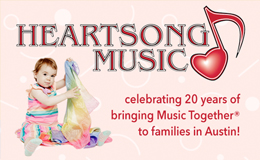With roots going back to 1975, when it operated as Austin Community Gardens, the Sustainable Food Center has worked to strengthen our local food system and teach the community how to grow and eat healthy food. If you think of the Sustainable Food Center as a farmers’ market, think bigger. Executive Director Ronda Rutledge recently chatted with us about the breadth of SFC programs.
AFM: Why is eating local important?
Rutledge: The longer food is off the vine, it starts losing nutritional value — if it’s in transport, if it’s sitting somewhere in a warehouse. You’re going to get the highest quality nutritional value if you eat food that’s grown locally. So, that’s one advantage. It’s usually less expensive, because you’re buying things in season. If you’re growing it yourself, you’re buying seeds and transplants rather than entire pieces of produce.
One of the biggest advantages is keeping our local dollars in our local economy, which goes to support small to midsize businesses, whether they’re farmers or ranchers or food producers of any kind. You’re helping bolster the local economy by eating local. And the environmental footprint, you know, when you’re going out into your backyard and pulling peppers and tomatoes off the vine, or even shopping at a local market. The average, I think, is 1,500 to 2,000 miles for what produce travels in today’s economy.
AFM: What are some of the obstacles to people eating more produce?
Rutledge: There are physical and economic barriers, for sure. But in our Happy Kitchen classes, we teach that if you buy in season, you get a break on the cost. And be choosy about when you can and can’t afford organic or sustainably grown food. Of course, the whole point of “Grow Local” is if you can grow some of this yourself, that’s going to offset your cost quite a bit. You can grow an amazing amount of food in just a container on your back porch or in your window sill. But getting involved in a community garden or finding a plot to be able to grow some of your own food will help offset those costs.
AFM: Have we lost some of that food-growing knowledge from previous generations?
Rutledge: There’s a whole generation where maybe they grew up on their grandparent’s farm or they had a victory garden in the yard or some sort of stronger connection to our food system. My family had a small farm with fruit trees, pecan trees, all kinds of vegetables. Then the generation after mine, if I hadn’t purposefully built a garden in my backyard, that would have been a lost thing for my kids. That happens within a lot of families. Michael Pollan says, “Don’t eat anything that your grandmother wouldn’t be able to pronounce.” It’s not real food. It’s food-like substance.
AFM: So, how can we get kids to eat more produce?
Rutledge: When my daughters are out there with me gardening, it makes a big difference. It also makes a difference when I pull them into the kitchen. I’ll be honest: during the school year when my kids have three or four hours of homework a night, I don’t ask them to help cook the meal. But in the summertime, we’re always together as a family, cooking, because they love that experience of sitting down and actually tasting something they had a hand in. Not to mention, we’re building these incredible life skills for our kids.
We’ve seen that in schools, where there’s a school garden and the farmer brings in stuff they’re growing. The kids will compare their peppers, let’s say, with the peppers of the farmers. They’re asking, “Why is yours more yellow?” Or, “What does it mean if they stayed in the ground too long?” It’s an amazing thing to watch.
The “happy plate” is so simple. It’s not about calories, and it’s not even really about portion sizes. Half your plate should be super colorful fruits and vegetables, another quarter lean, clean protein — whatever protein means to you — and another quarter of whole grains. And drink lots of water.
AFM: Any last thoughts?
Rutledge: We’ve been mistaken for a food bank. Sometimes people think we’re growing this produce ourselves. We’re just making connections between growers and consumers. Most of our gardening classes, most of our cooking classes and all our community farm stands are run by community members. We’ve provided training and support. It’s about teaching people how to grow, how to share, and how to prepare it.
By Sherida Mock, Editor Austin Family Magazine
Public Programs through the Sustainable Food Center
Farmers’ Markets
Year-round markets where farmers sell what they grow
Saturdays 9 a.m. to 1 p.m.
- Downtown at Republic Square
- Sunset Valley at Toney Burger Center
Cooking Classes
Fundamentals of cooking skills, ethnic cuisines and seasonal eating
- $30 classes for the general public
- FREE classes for participants in communities facing health disparities
Gardening Classes
Fall, winter and spring classes that equip participants to start and sustain organic food gardens
Chicken Coop and Beekeeping Classes
Perfect for new beekeepers and chicken owners or those looking to start a hive or coop
Tours
TEKS-aligned school field trips, volunteer work days, group tours and self-guided visits that demonstrate sustainable food gardening techniques suited to Central Texas’s semi-arid climate
Community Kitchen
A rentable, fully-functional kitchen and space for meetings, events, gatherings and celebrations


















